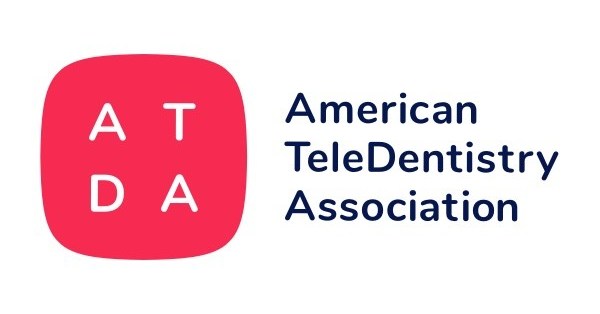Dental Implants
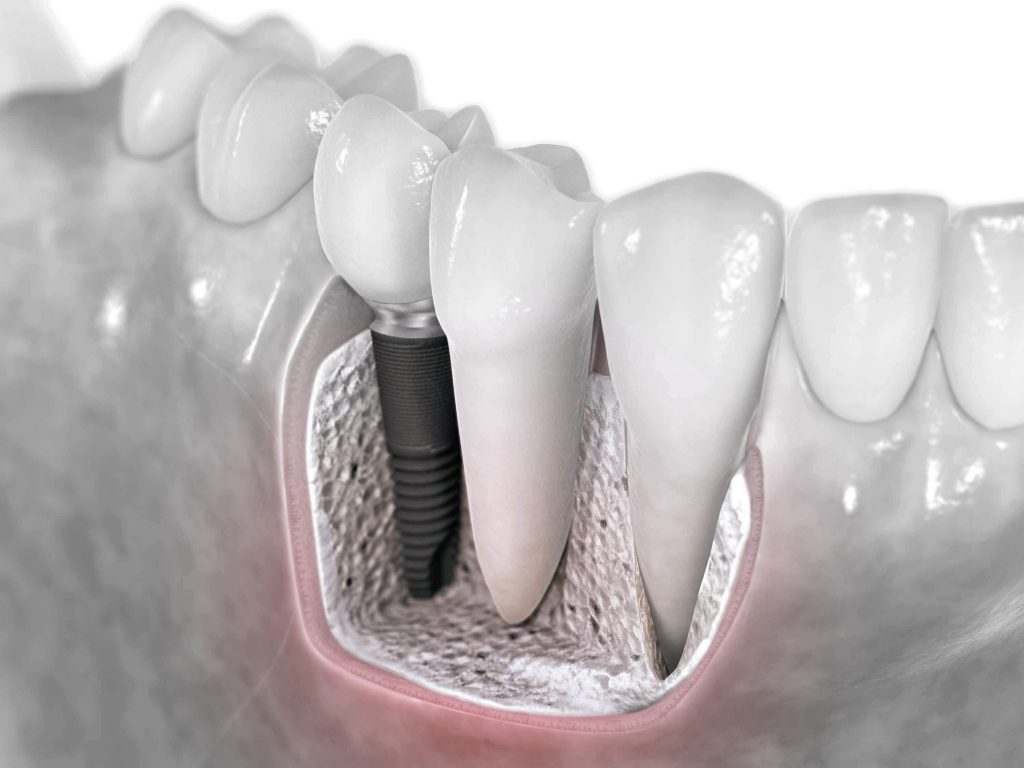
Single Dental Implant
When you have lost your tooth or you are missing a single tooth. The most ideal dental treatment would be a single dental implant. A single dental implant can be placed at the time of extraction or it can be placed afterwards. More you wait to place a single dental implant, more you have to worry about the shrinking bone space, unless your extraction socket is filled with bone graft material at the time of extraction. A single dental implant typically consists of three to four parts depending on the type of the dental implant. There are dental implant manufacturers that combine some of the parts, making fewer parts for better clinical outcomes and also economics. However, all dental implants are consists of the following parts: Body of The Implant, An Abutment and The Final Crown or prosthesis. The additional parts associated with dental implants could be a screw connecting the abutment to implant body.
Multiple Dental Implant Fixed Bridge
When there are several teeth missing in a row, sometimes it is possible to replace only a few of the missing teeth with dental implants and use those as an anchor and build a bridge across those implants. The situation may work well in areas where an existing bridge has failed or bridging the area will eliminate the need for bone grafting, saving patients from the additional surgery and associated cost. A multi unit dental implant fixed bridge where each of an anchor is supported by a dental implant is a highly predictable treatment compared to a conventional fixed bridges anchored by natural teeth. With Natural teeth, fixed bridges have a high incidence of failure due to high risk of decay on the anchored teeth due to difficulties in keeping the bridge hygienic. However, Multiple Dental Implant Fixed Bridges must be structurally designed with maximum number of implants serving as anchors so biomechanically, the bridge is not compromised.

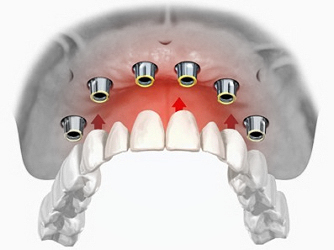
Multiple Dental Implant Arch Reconstruction
There are clinical situations that you may have lost your teeth in the whole arch due to periodontal bone loss, accidents or trauma. With the latest advances in dental implants, our dental team of specialists who understand
biomechanics, structural engineering and esthetics are able to provide you with a minimum of 6 to 8 dental implants and anchor a fixed ceramic bridge. This will be the closest replica of your natural teeth and can feel extremely solid. This type of treatment must be completed by a team of specialists who truly understand biomechanics, structural engineering and esthetics. A dentist who is highly skilled in providing single dental implants routinely may not be capable of providing such a complex treatment. Just as a contractor who builds small projects for a living will not be able to build a high-rise building. Dental Implant Experts will assign the most qualified team of clinicians based on complexity of your case.
Implant Supported Overdentures
Overdentures, are removable prosthetics that are supported by natural teeth or dental implants. As dental implants have become more predictable, OverDentures supported by natural teeth are becoming less common due to high incidence of decay associated with natural teeth. Dental Implants used for over dentures have a special connection that helps the denture snap in on to the implant. These special connections are called Ball Attachments, Locators or Equators. They all serve the similar purpose and serve as the attachment for the housing located inside the denture. Implant Supported OverDentures is an economical way of stabilizing a removable denture and for those who have worn dentures for a very long time, is a blessing. However there are much less inferior compared to an implant supported fixed denture. To learn more about them, please click.
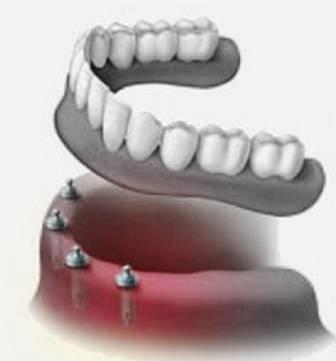
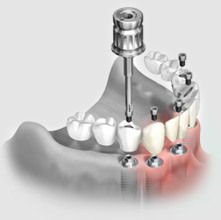
Implant Supported Fixed OverDentures
Also known as a ” Hybrid”, Implant Supported Overdentures is an acrylic based denture cooked over a metal framework with access openings on top of dental implants that are passively inserted on to each dental implant and secured tightly with matching screws. The hybrids have undergone many technological advances over the last 15 years and have become a popular choice among denture wearers and those looking at a fixed prosthetic option at a good value. The framework supporting the acrylic based dentures are typically scanned and milled in one pieces from milled titanium. However, there are laboratories that are still using casted gold or laser welded titanium stock bars. Hybrids can not be removed by the patients but are designed in such a way to provide suitable access for patients to clean them properly. To read more on different types of Hybrids, please click the link. All-On-Four, All-On-Six, Fixed-On-Four, Zygoma Implant Supported Dentures.
Implant Supported Fixed Porcelain Bridges
These implant supported prosthetics are very similar in concept to an implant supported fixed overdenture. The difference here is that there are no acrylic involved in fabrication of these bridges. Instead, porcelain has been added through pressing or add-on powder/liquid to a milled framework fabricated from zirconia or chrome cobalt. Tooth color shade porcelain is used to build all ceramic teeth from scratch and all missing gum area is generally made from pink porcelain. A highly qualified ceramist, a dental lab technician who is trained not only in precision milling and structural engineering but also in cosmetic dentistry, must create this type of prosthetic. The fabrication of this prosthetics as well as the expense involved makes them less popular than a hybrid. However, this is the most ideal treatment for those patients who have ample time for the treatment and the finances to support it.
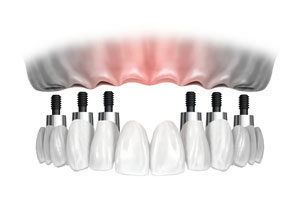

Zygoma Implant Supported Dentures
Patients who have worn dentures for a very long time on the upper jaw, typically have lost a large amount of bone specially in the back part of the jaw and their sinus cavities have expanded. This clinical situation could be ideal for Zygoma Implant Supported Dentures. In this procedure, the surgeon will place two very long dental implants in an angle in to the patient’s Zygomatic bone ( Cheek Bones ) with additional dental implants in the front part of the jaw. This procedure is done to avoid sinus bone grafting and in many situations can save the patient both time and cost. The procedure is highly complex and it must be done by our highly trained team of specialists that do this procedure routinely.
Full Mouth Reconstruction
The term Full Mouth Reconstruction ( FMR ) refers to a complex process where the entire mouth is worked on. The process can only be accomplished by our team of specialists who do this procedure routinely and have a vast knowledge about Occlusion, Structural Engineering, Bio-Mechanics and Cosmetic Dentistry. FMR is indicated on patients where they have a collapsed bite, an uneven bite or patients who have an overall poor dental prognosis. FMR can be accomplished with many different prosthesis outlined on this information page. Our team of specialists will explain your options at the time of your appointment.
To see a gallery of patients who have undergone FMR, please click. FMR
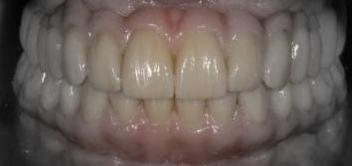
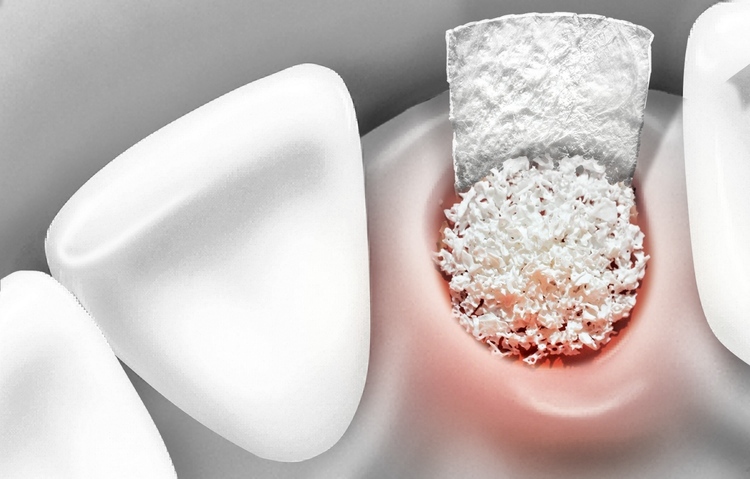
Socket Bone Grafting
After a tooth is extracted, the empty socket will collapse from all directions if it is not occupied. In most cases it is best to replace the extracted tooth immediately if possible with a dental implant but in cases that this can not be accomplished, it is highly recommended that the socket to be filled with an external bone graft material. The bone graft will preserve the socket and avoids extensive bone augmentation & cost in the future. For the types of bone graft materials please consult with us.
Lateral Bone Augmentation/Expansion
There are clinical situations where there is not sufficient bone width compared to the diameter of the implants needing to be placed. This can be result of previous extraction trauma, periodontal bone loss or simply the fact that the socket was never preserved with a bone graft material at the time of extraction. Whatever the reason, lateral bone graft augmentation is a requirement for placement of a dental implant. The procedure can be accomplished by use of bone blocks or combination of powder bone combined with a membrane. Please consult with one of our dentists at Dentist Consultation Hub regarding the types of bone graft and membranes.
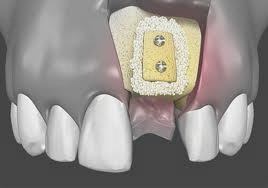
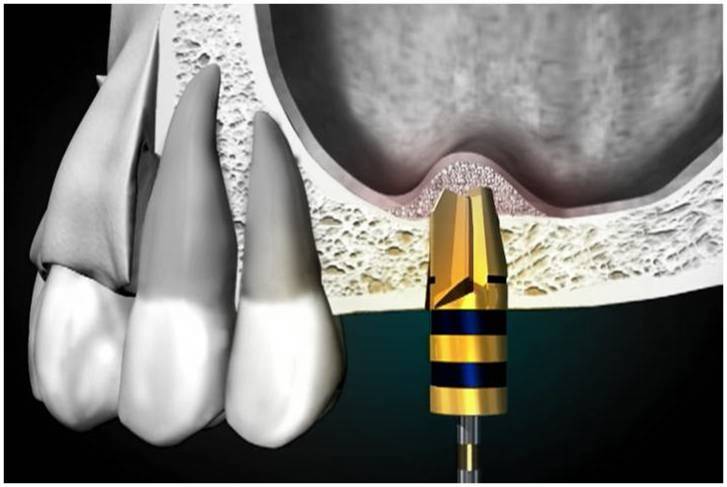
Sinus Bone Grafting
Maxillary sinuses are small pear shaped air cavities in the upper jaw that expands in size until all permanent teeth come in and are formed. When upper teeth in the back of the mouth are extracted or lost, the sinus cavities start to expand again. Combination of sinus expansion and atrophy of jaw bone over the years creates a clinical condition that in many instances makes it difficult to place dental implants successfully. Your dental surgeon may recommend a sinus bone graft in your situation, in order to augment the bone so implants can be placed successfully. Sinus bone grafting is a complex process but in hands of our implant experts can be accomplished with ease, comfort and predictability. Sinus bone grafting techniques have evolved over the years and the surgeries are becoming more and more predictable and less invasive. Lateral Sinus Graft, Vertical Sinus Lift, Sinus Floor Transports are different techniques used commonly.
If you are considering to replace a missing tooth or getting a full mouth dental implants, get a consultation and find a qualifying dentists at DentistsConsultationHub. We offer unbiased and independent dental evaluations.
Check our recommended dental implant brands based on clinical evidence and scientific reports.
* This is not a comprehensive list








